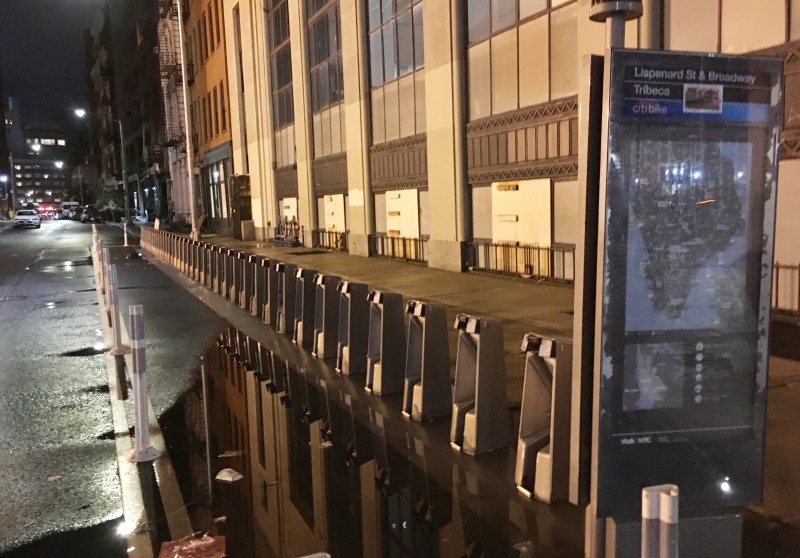It’s Not Your Imagination — Something is Seriously Wrong With Citi Bike Right Now

Where are all the Citi Bikes?
New York’s bike share system, which has been struggling to expand its stated fleet of 12,000 bikes as competitors bay at the window now has a new crisis: In the last two weeks, 21 percent of its blue roadsters have simply disappeared.
According to the Lyft-owned company’s own data, there were only 7,166 Citi Bikes in service on Tuesday, Sept. 25 — down from 9,112 bikes two weeks earlier. That rapid decline makes Citi Bike, which is, arguably, the world’s most popular bike share system, far and away the world’s worst-maintained system.
No other comparable bike-share system comes even close to having 41 percent of its fleet simply unavailable, according to Bike Share Map, which displays live data from over 300 systems worldwide. A spot check on Tuesday showed that Chicago’s Divvy had 69 percent of its 5,800 bikes in racks or on the road, Toronto’s system had 83 percent, and Montreal’s Bixi had 89 percent.
Even before the rapid decline of the last two weeks, Citi Bike had just 72 percent of its stated fleet of 12,000 bikes available.

“I am a loyal customer,” said one Citi Bike fan who alerted Streetsblog to the shortfall. “But I am just frustrated that I can’t get a bike any more.”
So what’s happening? Oh, that’s easy: The five-year-old system — which handles close to 80,000 rides on a good day — is breaking down. Even Citi Bike’s parent company, Motivate, admits that.
“Keeping the bike fleet in a state of good repair is a key priority for Citi Bike, and right now we have a backlog of bikes that are due for maintenance and repairs,” a spokesperson for the company told Streetsblog. “We are putting extra resources toward getting these bikes back out on the street and expect fleet levels will improve soon.”
Unlike other forms of public transit, such as the city’s highly supported ferry system, Citi Bike is not subsidized by the city, a deal worked out when Citi Bike was launched with 6,000 bikes in 2013. The contract with the city gives Citi Bike a monopoly on bike share through 2029, though Motivate is required to hit the 12,000 benchmark.
Not only does New York not subsidize Citibike, they charge them for parking space on city streets and charges Citibike users sales tax when they buy their passes. New York makes it profit off of Citibike.
— Izengabe (@Izengabe_) July 17, 2018
Oliver O’Brien, the creator of the Bike Share Map and a digital cartography researcher at University College London, says he thinks the problem is not maintenance, but fantasy: Citi Bike probably isn’t deploying 12,000 bicycles.
“Almost all bike-share systems exaggerate the number of bikes in the system,” he said. “More likely, the 12,000 number includes those in storage, in the repair workshop, or held by valets to be put out manually for riders during the peak of the morning rush hour (on a busy day) if needed.”
Customers are definitely noticing.
“I am an annual Citi Bike member,” tweeted Samantha Chang. “This bike station at Columbia University is always poorly stocked.”
https://twitter.com/samantha_chang/status/1044592663247409152
And “War on Cars” podcast co-host Sarah Goodyear is also on the case.
Motivate declined to provide more information about the cause of the maintenance backlog. City Hall did not return a call for comment. We’ll update if we hear back.



